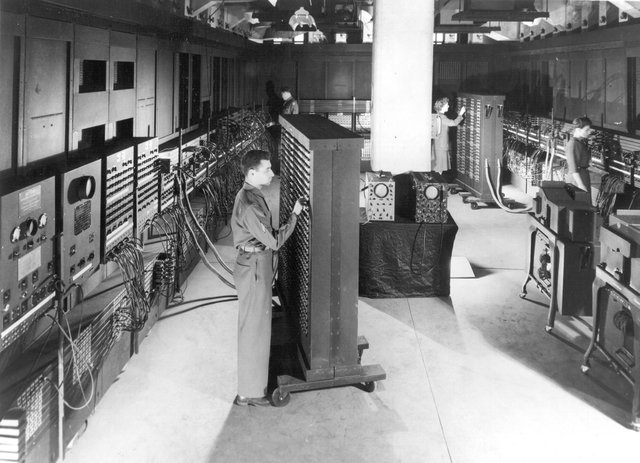I gave a talk on 'Physics and neuroscience', in which I included the Penrose and Hameroff's hypothesis about the nature of consciousness.
Although the hypothesis itself is a very speculative proposal and has been discredited to this day, the motivations enumerated by Penrose in his books The big, the small and the human mind and The emperor's new mind are still valid and without explanation, constituting a very stimulating subject for scientific inquire.
What is consciousness?
According to the dictionary, the word refers to the knowledge that a living being has of itself and its environment.
However, the very definition of the phenomenon already generates controversy: each one of us knows that he is conscious, but how do we know that the others are?
In everyday life, our only proof of the consciousness of others is how they interact with us. As far as we know, they could be philosophical zombies, i.e. empty beings inside who do not know they exist and who function mechanically, replicating the external responses of a conscious being, but lacking any inner life.
Alan Turing proposed to use with computers the same criterion, a little lax, that we use with our fellow men to know whether they are conscious: if when interacting with them we do not distinguish their answers from those of a conscious being, let us consider them conscious! Their objectors pointed out that, even if in their answers we could not distinguish them from a person, computers would not be replicating the physical processes that occur in a person's brain. Such processes could be crucial in the generation of the phenomenon we know as consciousness.
 (PD)
(PD)
But what exactly is consciousness, from a physical point of view? There are three possible approaches, depending on whether it is a property
Essential: that is to say, consciousness is not physical, but an external component to the physical world that binds itself to some living beings during their life. This is the position of religion, with the idea of soul. Few researchers accept this option as a scientific possibility.
Emerging: Consciousness is a consequence of the physical processes that occur in that extremely complex system that constitutes our brain. These processes have no new ingredients and follow the laws we know. This is the general position among neuroscientists.
Intrinsic: consciousness is a fundamental component of the Universe, a part of the physical laws that we have yet to enunciate.
Penrose and Hameroff's proposal is based on the last option, and considers that the missing component in our description of the Universe has something to do with quantum mechanics, and with a phenomenon known as objective collapse. Their motivation was, on the one hand, that the processes of quantum collapse seem related to the conscious state of the observer and, on the other hand, that the human mind solves problems that cannot be solved by a classical computer.
What is quantum collapse?
Let's suppose that we read The cat in boots illuminted with the light that comes to us at the same time from a window and from the reflection of the window into a mirror. The light falling on the book is a superposition of light coming from the two sources. Only if we put our hand covering the window or the mirror can we know where a given photon comes from. If the fate of the protagonist of the book depended on that, he would not be neither alive nor dead as long as we abstained from doing so. It would be a Schœdinger cat that lives or dies only when we decide to observe.
 (PD)
(PD)
This Copenhagen interpretation of quantum mechanics seems to focus on the conscious state of the observer: only when the observer learns where the photon came from, must the cat face its destiny.
Let us clarify however that this is only an interpretation, that is a mental image of mathematical formalism, and that it is not the only one possible, although it is the most popular among scientists. It is not a scientific fact with empirical support: the formalism of quantum mechanics works perfectly well, even if we give it a completely different interpretation.
What is a non-computable problem?
What does it mean that the human mind solves non-computable problems? Basically, you can't program a computer to demonstrate theorems, as the mind of any human mathematician does.
The best way to see this is to use a version of Gödel's theorem due to Turing:
Suppose we program a computer to test some proposition about natural numbers.
For example "any number n > 1 can be written as the sum of two primes". The computer will proceed to test one by one the natural numbers, and will stop when the proposition is not fulfilled.
n = 2, is the sum 1 + 1, is met
n = 3, is the sum 1 + 2, is met
.
.
.
n = 10, is the sum of 5 + 5, is met
n = 11... ups! Not met!
The program stopped at step n = 11.
We can write a similar program for any proposition we can think of about a natural number. If the program stops at step n, the proposition is false. If it never stops, it is true for all naturals.

(PD)
Now, can we write another, more elaborate program that tells us a priori whether or not the program that tests any particular proposition will stop at step n? Such a program would be a "theorem-proving machine" can such a thing exist?
If so, could you tell us in particular whether the program that tests the n-th proposition will stop at step n...
...but, wait a minute! The latter is a proposition about a natural number, so it must be the target of one of our testing programs, say the k-th program.
Let's concentrate on it and ask our theorem machine: "the program that proves the k-th proposition will stop at step number k?_
If the answer were
nothis would imply that the k-th proposition is true. But the k-th proposition is precisely "the program proving the k-th proposition will stop at step k", that is, the answer should have beenyes.If the answer were
yesthis would imply that the k-th proposition is false. But the k-th statement says that "the program proving the k-th statement will stop at step k", so the answer should have beenno.
Vertigo! BLUE SCREEN!

(CC BY-SA 3.0, by AlexTheRose)
In other words, the assumption that there exist a machine capable to prove theorems leads to a contradiction.
And yet...
...somehow there is a theorem-proving machine, which does not enter the blue screen: the human mind!
What's going on?
Penrose and Hameroff pointed out that the programs of the previous demonstration are classical programs: at each step the answer is 'yes' or 'no', the cat is 'alive' or 'dead'.
What would happen -they wondered- _if we wanted to repeat the reasoning within a quantum program, where the answers can be superimpositions of living and dead cats?
Perhaps the apparently magical ability of the human mind to violate Turing's demonstration is due to quantum mechanics and the collapse phenomenon described above.
The hypothesis of Penrose and Hameroff is quite discredited today, for several reasons.
The simplest objection is that by Stephen Hawking, which could be summarized in: What does one thing have to do with the other? Just because quantum collapse and the ability of the human mind to solve non-computable problems are two scientific mysteries, does not imply that it is the same scientific mystery.

(CC0)
A second point is that it was proved that any quantum algorithm can be reproduced with a classical algorithm. So after all, there is no magic in quantum mechanics!
Finally, Copenhagen interpretation of quantum mechanics is being displaced by the many worlds interpretation (which I leave for another post), in which the phenomenon of collapse is not linked to the consciousness of the observer.
However, beyond the hypothesis in itself, the motivations of Penrose and Hameroff remain open areas of research. Both the problem of collapse and that of consciousness are fascinating and little understood, and constitute cutting edge areas in current scientific inquire.
My posts (mostly in spanish) are published in
- Cave Canem (science, opinion)
- Literatops (literature)
- Diaspora*
- Mastodon
- SteemIt
- Telegram
- Tumblr
I can also be contacted at
Congratulations @severianx! You have completed the following achievement on the Steem blockchain and have been rewarded with new badge(s) :
Click here to view your Board of Honor
If you no longer want to receive notifications, reply to this comment with the word
STOPTo support your work, I also upvoted your post!
Downvoting a post can decrease pending rewards and make it less visible. Common reasons:
Submit